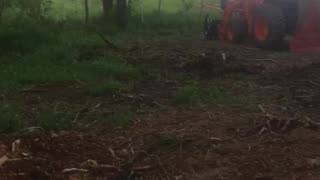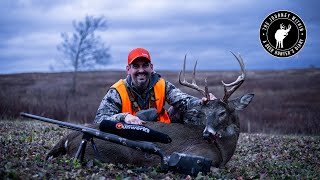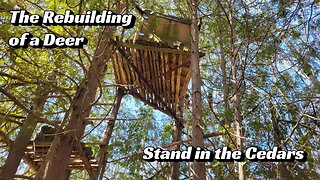Northern Kentucky Project: Fawning Over Wildlife
As I was working on bush honeysuckle removal, I almost dropped the Pullerbear Pro right on top of this fawn, it was that well blending in to the vegetation. Thankfully, at the last second, I noticed the spots and the coppery brown color and pulled the bar up before it made contact.
Things to remember about wild deer babies (fawns). They are typically born late April - early June depending on where in the country they are and the typical climate for the region. Here in Northern KY, I would guess it is most concentrated around mid-May to early June.
A few years ago, I worked on a white-tail deer / coyote research study as a wildlife technician for Clemon University. We attached GPS collars to the mothers, the fawn, and coyote, and studied the usual distance a mother would travel from her fawn, and also how often coyote would pass by fawn without detecting it. Fawn are born without any scent, so predators cannot smell them while they are that young. Mother deer (doe) typically leave them for hours at a time and in our study (I believe one was found to travel over a mile from her fawn), only coming to feed them a few times a day. This is for the baby’s safety because when the mother comes to nurse, the fawns location is exposed, and the mother risks getting her own scent on the fawn which would cause them to become more easily detectable by predators.
If you come across a fawn, leave it be. Unless you see the mother getting hit by a car, or the baby just walking around dehydrated bleating, the mother has likely not abandoned it. The longer you linger in the area the harder it will be for the mother to come back to feed the baby fawn causing the fawn to become distressed.
Hope this helps you in your own adventures in the forests.
Until next time.
-
 7:24
7:24
Moon-Struck Land Management
1 month agoNorthern Kentucky Project: Using Buffer Trees and Walking a Tree Down
671 -
 0:28
0:28
Moon-Struck Land Management
1 month agoNorthern Kentucky Project: Panned View of Wooded Recreational Area - Visual Results of Directional Tree Felling
631 -
 11:07
11:07
Pork Police Hunting
1 month agoNice 8 Point Buck! Texas Deer Hunting
295 -
 2:59
2:59
OceanMtsmore
1 month agoFawns grow stronger, TX Night Hog's & Deer Weekly 5/24/24
32 -
 13:45
13:45
Mark V Peterson Hunting
2 months agoNorth America Deer Slam - Kentucky Whitetail | Mark V. Peterson Hunting
1141 -
 12:35
12:35
Mark V Peterson Hunting
2 months agoNorth America Deer Slam - Montana Whitetail | Mark V. Peterson Hunting
96 -
 9:02
9:02
My Self Reliance
2 months agoQuick Turkey Hunt in my Food Forest
7.02K11 -
 10:15
10:15
Pork Police Hunting
1 month agoThermal Hog & Coyote Hunt | Destruction
66 -
 2:47
2:47
Outdoor Pursuits
1 month ago $0.09 earnedThe Rebuilding of a Deer Stand in the Cedars
15012 -
 1:09
1:09
BrantaMediaDotCom
2 months agoBirds Of Newfoundland-American Coot-Fulica americana
72